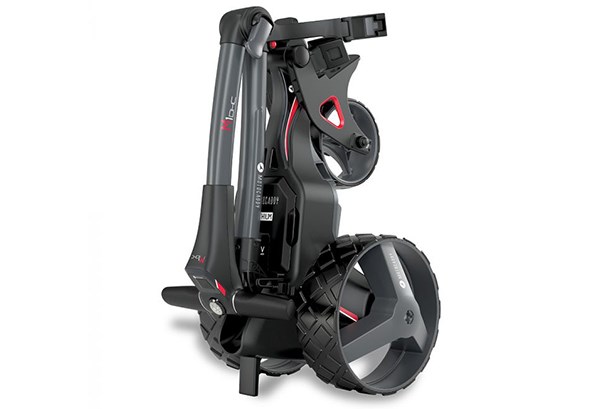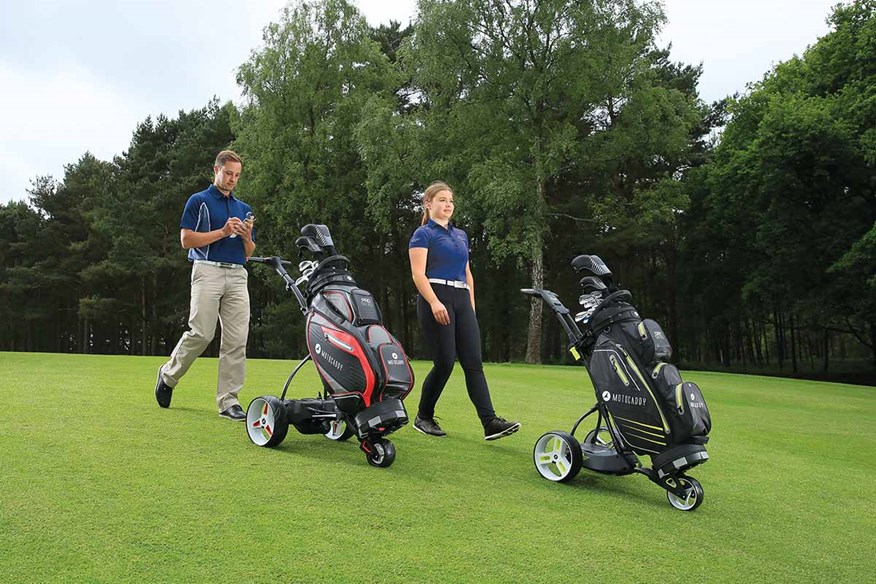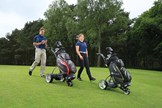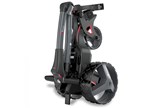Do you need Downhill Control (DHC) in your electric golf trolley?
Last updated:
Do you need Downhill Control (DHC) in your electric golf trolley?
Very few golf courses are completely flat. That means that a golf trolley user will, in all likelihood, need to park their trolley on a slope at some point during their round.
Their only hope used to be parking the trolley at a sideways angle and hoping that gravity – and the weight of a golf bag – didn’t pull their trolley down the slope.
They also had the problem of walking down steep slopes, which used to be a challenge with a golf trolley. Golfers were forced to grip the trolley handle tightly and fight against gravity to prevent their trolley from freewheeling, where it would pick up speed and get away from them.
RELATED: Best Electric Golf Trolleys 2020
Motocaddy didn’t feel that was a suitable solution. So, 10 years ago, they introduced their very first Downhill Control (DHC) trolley. It had twin-motors to help keep the trolley secure when parked on a slope.
Today, Motocaddy DHC models have come on leaps and bounds, with the development of new Motocaddy technology that makes it possible to use a single motor to achieve better results than the twin motors, plus all-terrain wheels for far better grip.
Nowadays, DHC models are a common part of the range and make it easy for golfers to relax when parking their trolley on slopes and when wheeling it downhill.
RELATED: Trolleys tested – PowaKaddy FX7 GPS vs Motocaddy M5 GPS
DHC models use an automatic braking system which means the trolley can maintain a stable speed, even when going downhill, without the golfer having to hold it back or adjust the speed settings.
It might not sound like a big deal, but it’s hugely liberating not having to worry about your trolley when playing on a golf course with slopes.

This year, for the first time, DHC models are available across all M-Series trolleys in the Motocaddy range, including the new cutting-edge M5 GPS DHC model – the world’s first compact trolley to offer a fully-integrated GPS built into a touchscreen display. All of these models offer golfers unrivalled control when moving down a gradient, plus an electronic parking brake and all-terrain wheels as standard.
RELATED: Stewart Golf reveal world’s most compact “follow” trolley
“We’ve created a trolley that can offer golfers the complete package for hilly courses,” says Motocaddy Director Paul Straker. “They no longer have to rely on stopping at acute angles to park their golf trolley on slopes. They can now go out on any course with confidence, however difficult the terrain.”
“There are lots of benefits to be had from using a DHC trolley,” says Marketing Manager Oliver Churcher, “including the prevention of potential injury – as a DHC model will help to reduce the strain on knees, hips and ankles when going down hills.”
RELATED: Best Golf Push Trolleys 2020
So, do you need Downhill Control in your golf trolley? Well, if you only ever play on golf courses that are completely flat, then no, probably not. But if you ever play on golf courses with some undulation, we’d say the extra money (it’s usually around £50 extra for a DHC model over its non-DHC equivalent model) is well worth spending.
It means you won’t have to worry about your trolley rolling away when you’re not looking, you won’t have to fight against it picking up speed when walking downhill, leaving you free to relax and enjoy the round, knowing that your golf bag and clubs are safely stowed on a trolley that will always be right where you want it.
Check out Motocaddy’s range of DHC trolleys here
READ NEXT: How an electric golf trolley can improve your scores and health


